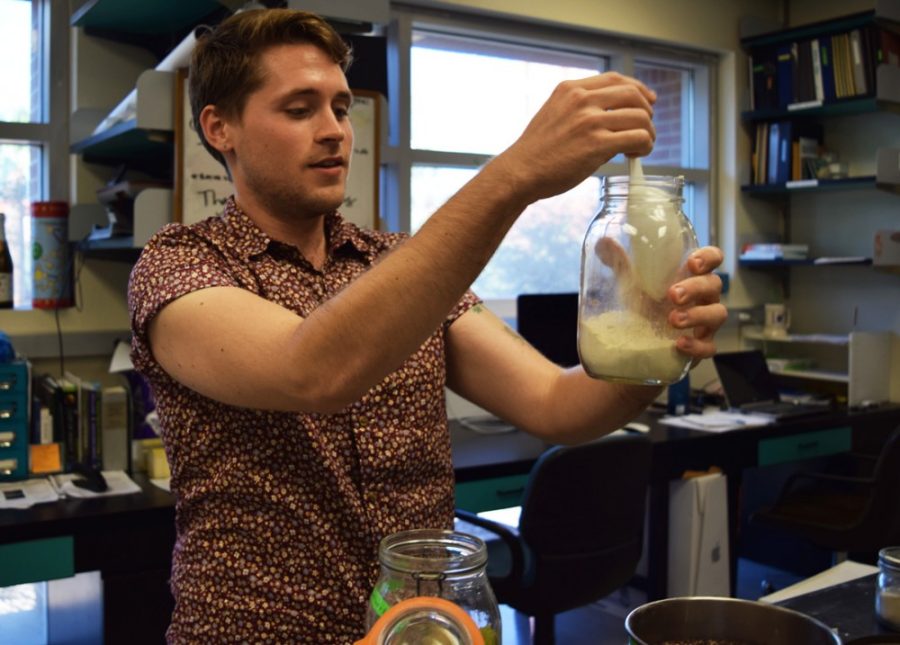A national organization to foster a sense of community for LGBT students in STEM fields is coming to the UA.
Cole Eskridge, a third-year graduate student studying entomology and insect science, is starting an Out in Science, Technology, Engineering and Mathematics chapter at the UA.
OSTEM is a national organization that started in 2005 and now has more than 50 chapters throughout the U.S. The organization’s goal is to foster leadership and involvement of lesbian, gay, bisexual and transgender communities in science, technology, engineering and mathematics fields. For the UA chapter to be recognized nationally, it needs to get approval from the Associated Students of the University of Arizona, which it is waiting for, according to Eskridge.
“We want to create a community of scientists encouraging a development of queer culture in the sciences for people to feel comfortable expressing themselves,” Eskridge said.
Eskridge plans on holding events for professional development, such as having someone from Career Services come in to help make a curriculum vitae for graduate schools and encouraging more people in the sciences to be Safe Zone trained. The Safe Zone Project is a series of workshops that train people to be allies to the queer community or, if they’re within the queer community, help educate them further, Eskridge explained.
Jennifer Hoefle-Olson, the program director for LGBTQ Affairs at the UA, said she sees a need for support for LGBT students in the STEM fields and has heard from past students that a group like oSTEM would have been valuable to them.
“I have encountered many students who identify as lesbian, gay, bisexual, transgender, queer and asexual within the STEM fields who are not out in their classes and programs, and who do not feel safe to be out,” Hoefle-Olson said. “I have supported students who have experienced overtly homophobic and transphobic comments in their classrooms. I have also worked with students who are out and proud, and who have had a good experience in the STEM fields — so it varies.”
Eskridge said the goals of oSTEM are to increase queer visibility at the UA in the sciences, encourage education about the queer community in the sciences and generate resources for queer students at the UA in the sciences.
“Ever since I started plugging for oSTEM, I’ve had a handful of people come up to me and tell me their stories about how they started out in the sciences but left because they were tired of feeling like they were the only queer person in their classes,” Eskridge said. “Increasing visibility shows them that the sciences are an environment … people can have a job in and be open about their lives.”
Noah Whiteman, an assistant professor of ecology and evolutionary biology, said the organization will benefit students by giving them role models so they can see that it is possible to be both out and a functioning member of the research, teaching and service enterprises at the university.
“I think it is important for professors that are mentoring the next generation of scientists to be a little bit more open than we might be otherwise, in order to encourage students that might not know of anyone like them in the role that they might want to see themselves in someday,” Whiteman said.
Hoefle-Olson said she believes that oSTEM will, over time, contribute to a more inclusive environment in the STEM fields that can help LGBT-identified students feel more safe to come out, be who they are and be valued for their whole selves.
“Everyone has their perspective to share and everyone has the potential to make this major insight,” Eskridge said. “If they feel like they’re isolated and leave the sciences, you’ve potentially lost something great.”
_______________
Follow Julie Huynh on Twitter @DailyWildcat









